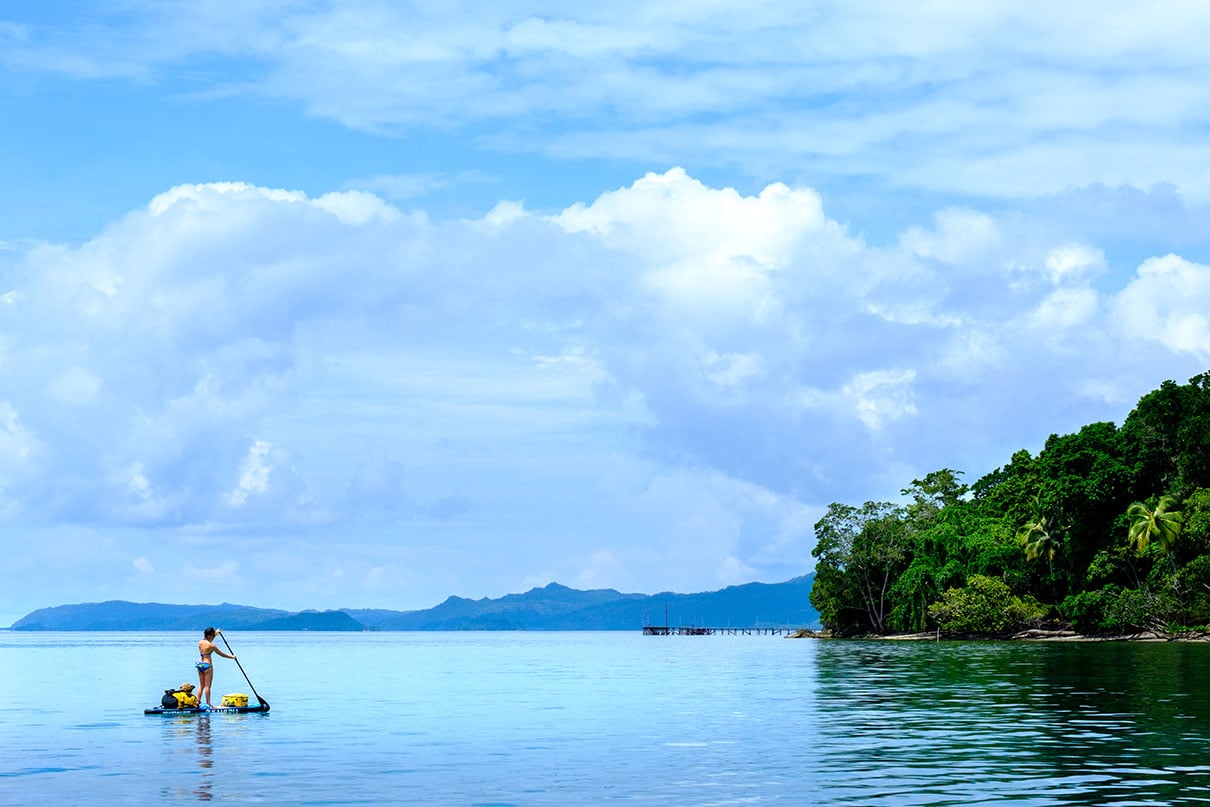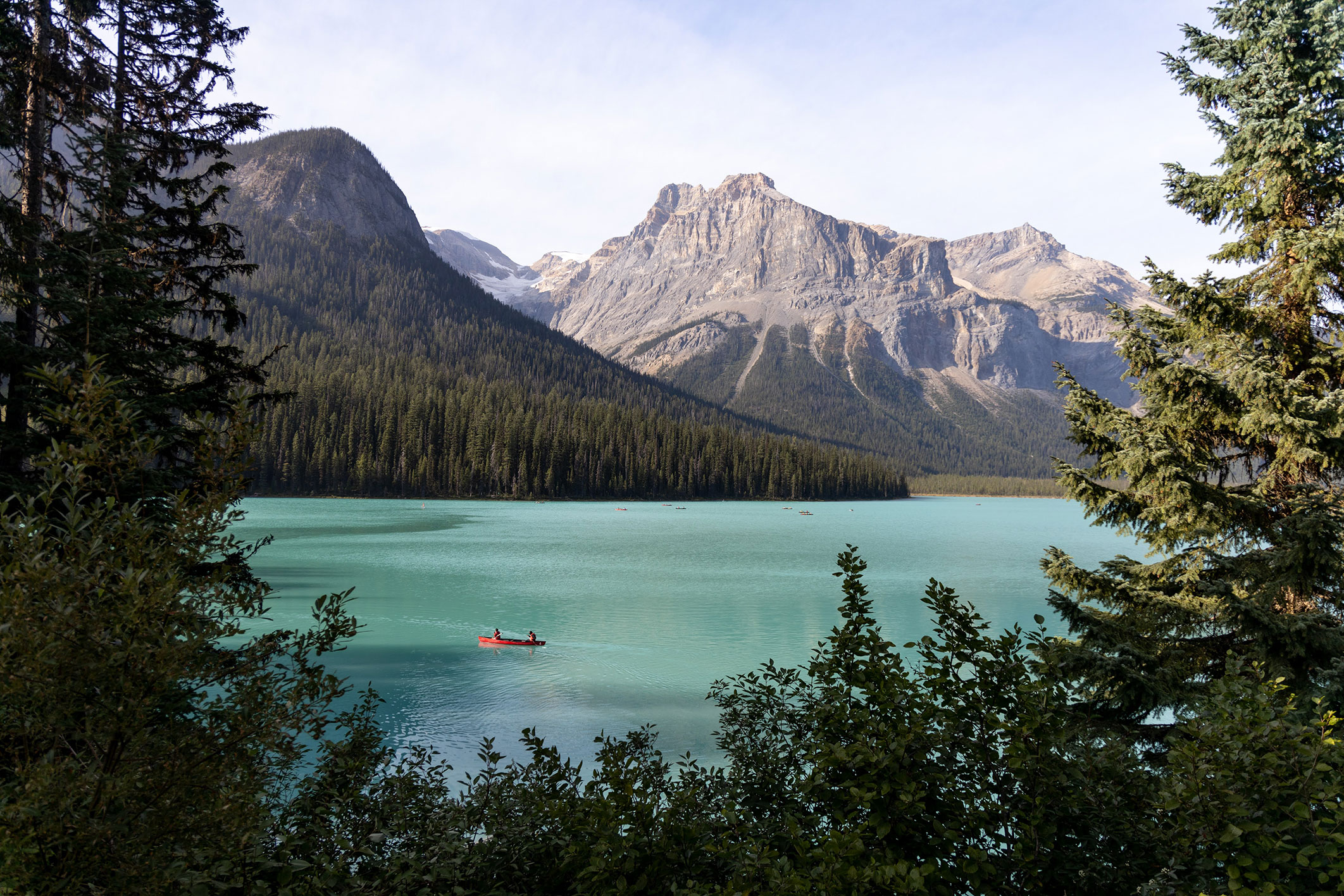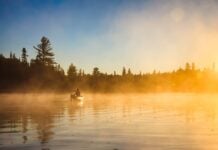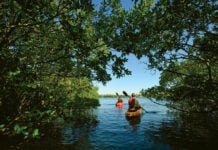Along with its coastal temperate rainforests and rugged Rockies, British Columbia is known for iconic wildlife such as bears, whales and eagles. The vast coastal waters are ideal for spotting marine life like orcas, sea otters, and humpback whales, while inland also is home to unique species, from the tiny blue-tailed skink to the majestic grizzly.
And wildlife isn’t all B.C. has to offer. With its wild Pacific coast, countless interior lakes, and epic rivers, the landscape is also a dream destination for many paddlers. Combine adventure and the wild kingdom and you have the trip of a lifetime.
Whether you prefer sea kayak expeditions along the misty coast, sunny afternoons on your paddleboard, or adrenaline-filled rafting and whitewater kayaking, each of these flavors of paddling bring you opportunities for unique wildlife viewing in B.C. What’s more, Paddling offers a low-impact way for viewers to travel and observe many of the species that make up the province’s incredible biodiversity.

6 wildlife viewing destinations in British Columbia

Spot Eagles and Salmon in the Harrison River
Every year, the massive Fraser watershed is traveled by thousands of spawning salmon, who in turn attract an astonishing concentration of bald eagles in search of a buffet.
The Harrison is home to five Pacific salmon species: coho, Chinook (king), chum, sockeye, and pink. The fish also have a profound impact on the entire ecosystem around them—for example, marine-derived nitrogen has been found in the lush coastal rainforest all along salmon rivers, brought there by bears, wolves, and other scavengers who come to feast on the plentiful fish.
Viewing tips
Paddling the Harrison during the autumn salmon run offers photography opportunities and an unforgettable perspective into the almost mystic life journey of the salmon. The river offers options for calm, accessible kayaking, and is just a two hour drive east of Vancouver. There are options on the Harrsion to paddle self-guided or guided through outfitters including Harrison Eco Tours.
While climate change, overfishing, and other challenges have impacted the numbers of returning salmon, conservation efforts and programs such as salmon hatcheries seek to support this keystone species. Paddlers can do their part to avoid disturbing salmon by using established launching and landing sites. This reduces impact on shallow water and river banks.
View eagles from a distance and do not approach if they have food – these birds need to conserve their energy for the approaching winter months.

Wonder at Wild Horses in the Nemiah Valley
Paddleboard, canoe or kayak the crystalline waters of Chilko Lake—a wilderness gem where visitors stand the chance to spot grizzlies, wolves, cougars, and remarkable Chilcotin wild horses. These tough, majestic animals gallop in the footsteps of their ancestors. Horses first evolved in North America 4 million years ago, and lived there for millennia until the most recent ice age. With the reintroduction of horses by Hernan Cortez in 1519, horses quickly spread across North America again and became an integral part of life for many indigenous nations.
Today, as in the past, horses are honored by the Tsilhqot’in as sacred beings, and play an important cultural and spiritual role. While wild horses remain a powerful symbol of freedom and wilderness for many, few places in the world offer sanctuary like the Tsilhqot’in Plateau around Chilko Lake.
Viewing Tips
At 80 kilometers in length and 1172 meters of elevation, Chilko Lake is the highest-elevation freshwater lake in Canada. Indigenous-owned and operated Nemiah Valley Lodge offers an unparalleled home base for exploring the area. The Tsilhqot’in Decision, a landmark Supreme Court ruling in 2014, was preceded by a 25-year court battle and awarded the Tsilhqot’in Nation rights and title to their 1,900-square-kilometers traditional territory. This ruling was a first in Canada and maintains the Tsilhqot’in Nation’s right to live, fish, hunt, forage, and raise wild horses as part of their culture.

Encounter Prehistoric Sturgeon on the Columbia River
Imagine peacefully paddling down the shallows on a sunny summer day, and encountering an armor-plated prehistoric creature the same size—or bigger—than your paddleboard! If you feel ready for a walk on the wild side, grab your board and go for a float on the Columbia River to search for sturgeon.
These mysterious, bottom-feeding fish have long fascinated researchers, and also proved irresistible to caviar hunters, who almost drove this species to extinction in some areas. The largest white sturgeon ever on record was measured at 6.1m (20ft) with a maximum record weight of 630kg (1,390 lb). However, rest assured, you are more likely to encounter smaller sturgeon who are a mere, cuddly two meters in size. Fortunately for paddlers, despite their large size and Jurassic-era design, sturgeon are peace-loving and prefer snacking on fish rather than hominids or paddleboards.
Viewing tips
The best time for sturgeon spotting is May and June, when their feeding ramps up with warmer water temperatures. Go with a guided tour, or rent a raft, kayaks, or paddleboard from Endless Adventure. And If close encounters with prehistoric megafauna aren’t exciting enough for you, get your adrenaline fix by joining one of their rafting trips on the Class III rapids of the nearby Slocan River.
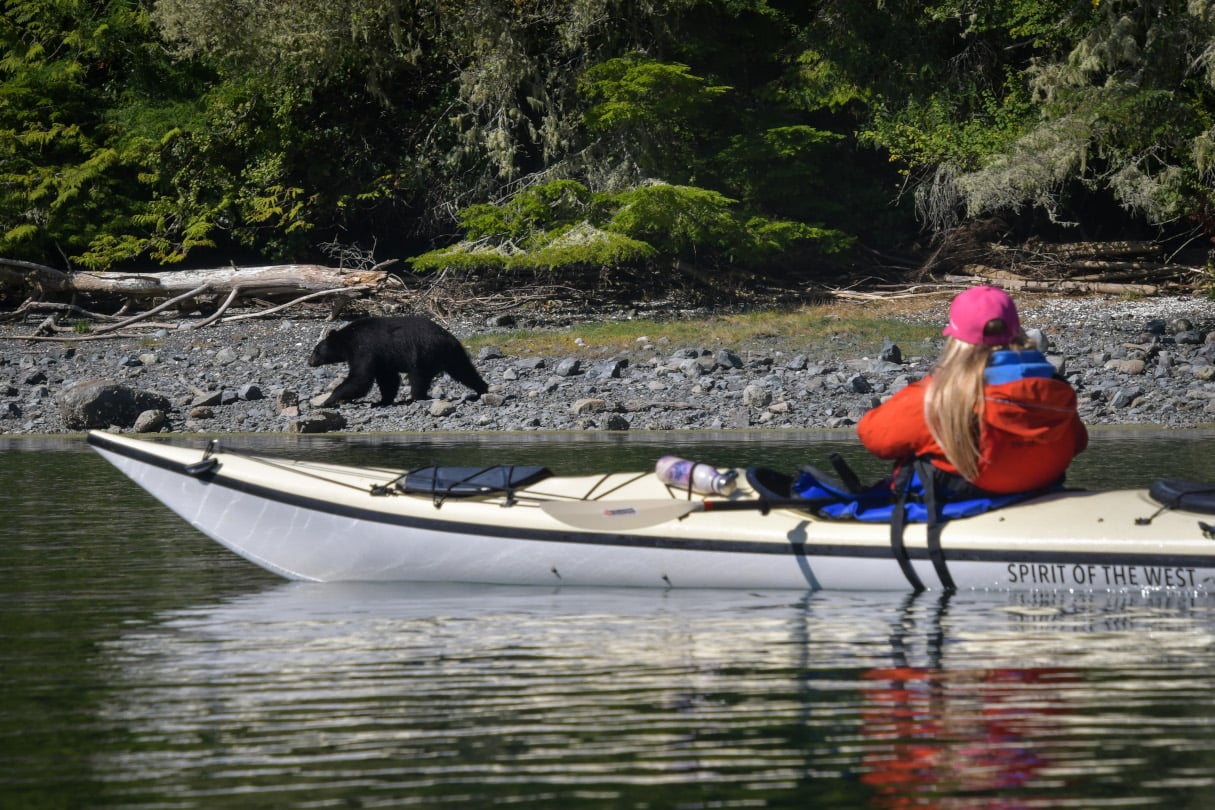
Find Your Inner Spirit Bear in the Great Bear Rain Forest
Covering over six million hectares and a seemingly endless coastline, the Great Bear Rainforest is part of the largest temperate rainforest in the world. The rainforest is famous for its spirit bears. Also known as Kermode bears, they are a white or cream-colored subspecies of the black bear. Spirit bears carry a gene that prevents melanin from being produced, and this gives them an advantage: white bears are harder for salmon to see through the water, and thus spirit bears are more successful at hunting than their darker counterparts.
According to Gitga’at and Kitasoo/Xai’Xais First Nations, spirit bears are a symbol of wisdom, peace, and harmony. Paddling past towering ancient cedars and Sitka spruce with an eye out for these creatures, you too may feel a sense of wisdom, peace, and harmony in the Great Bear Rainforest.
Viewing tips
The outer coasts of Great Bear Rainforest are pounded by the Pacific swells and have challenging, exposed paddling conditions, while the inner channels and sheltered bays can offer calmer wildlife viewing. Big tidal interchanges create exciting currents and ever-changing landscapes; sometimes without even leaving your campsite.
Experienced kayakers may choose to do self-guided journeys; however, for many people a guided trip is the ideal way to explore this remote part of the coast. Spirit of the West Adventures and other outfitters offer a variety of guided experiences.
As with all wildlife—maintain a respectful distance, secure all potential attractants in your campsite, and never approach a bear.
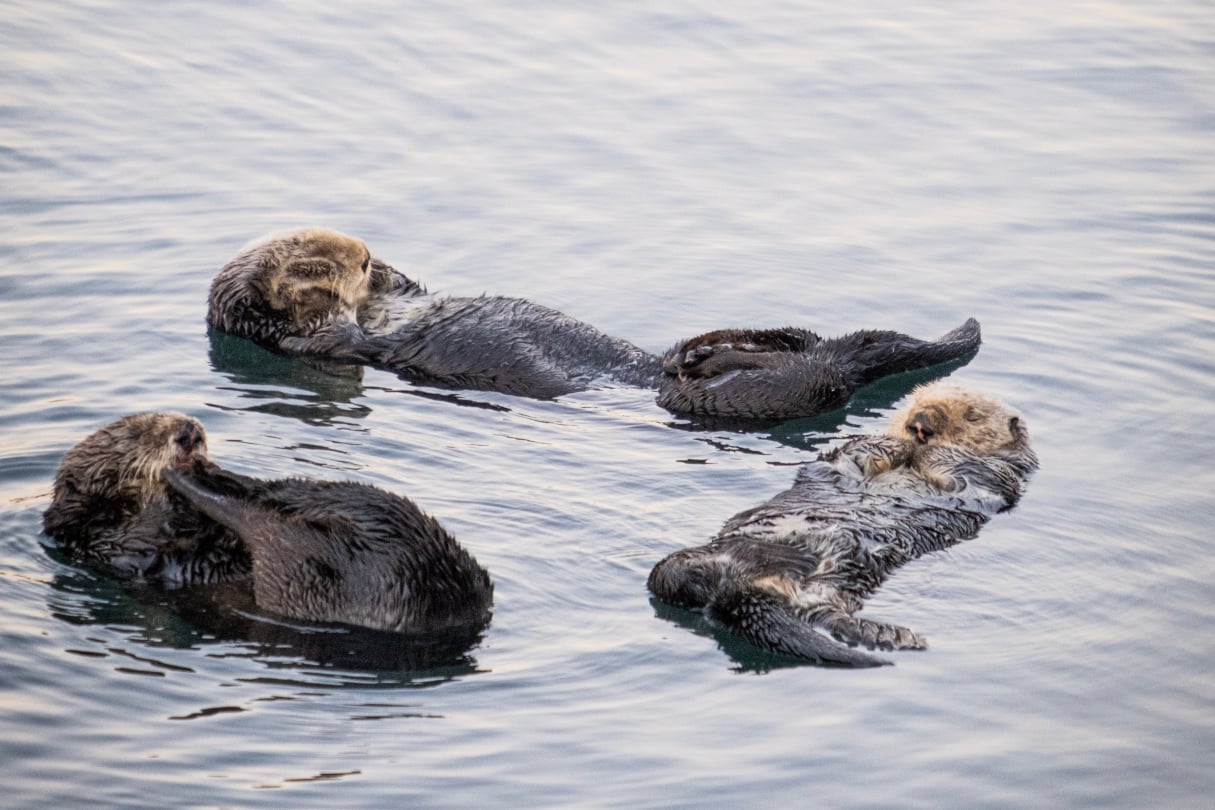
See The Big Six in the Serengeti of B.C.
Technically, B.C. doesn’t have a Serengeti, or an official Big Six of wildlife. However, for anyone willing to travel far and put in a solid effort, Haida Gwaii is an unparalleled destination to see bears, sea otters, seals, orcas, deer, eagles, humpback, grey whales, and more. A glowing green jewel surrounded by stormy seas, the archipelago more than 50 kilometers from the nearest Canadian coast is a bucket list destination for travelers willing to make the long trek by airplane or 10-hour ferry ride.
While much of North America was crushed under kilometers of ice during the last ice age, Haida Gwaii remained unscathed. After dodging the ice age with its biodiversity intact, the incredible efforts of the Haida and conservationists further protected the remote islands from logging and exploitation, culminating in the creation of Gwaii Haanas National Park.
Viewing tips
Many paddlers choose to explore the east coast of Moresby Island with outfitters such as
Kingfisher Wilderness Adventures – Sea Kayaking Tours. Experienced, well-prepared paddlers may consider doing a self-guided expedition.
While wildlife encounters are likely in many places in Haida Gwaii, Burnaby Narrows (also known as Dolomite Narrows) offers an incredible array of intertidal biodiversity, and often there are extraordinarily large, well-fed black bears foraging along the shoreline.

Whale Watching on Vancouver Island
With an intricate coastline and countless archipelagos, Vancouver Island is a whale watcher’s dream. The beloved and endangered southern resident orcas can be found in the Straight of Georgia and the Salish Sea. Meanwhile, paddlers are most likely to spot transient orcas in the Johnstone Straight, Queen Charlotte Straight, and along the rugged west coast of Vancouver Island. And humpback whales and grey whales are other sightings fortunate paddlers are likely to encounter.
Viewing tips
Depending on your preferred flavor of paddling, there are numerous options available on Vancouver Island.
In the right conditions, the more sheltered Southern Gulf Islands can be accessible by canoe or paddleboard as well as sea kayak, and offer a great place to develop camping and expedition skills. Gulf Island Kayaking on Galiano Islands offers guided tours and rentals, as well as a learn-to-kayak camp program.
For travelers wishing to go further afield, Telegraph Cove has numerous outfitters such as North Island Kayak. Famous for its whale-watching opportunities, Telegraph Cove makes a scenic, historical starting point for exploring the Broughton Archipelago and Johnston Straight by sea kayak.
Learn more about wildlife viewing in B.C., as well as outfitters, lodging, and travel experiences at Paddle BC.


